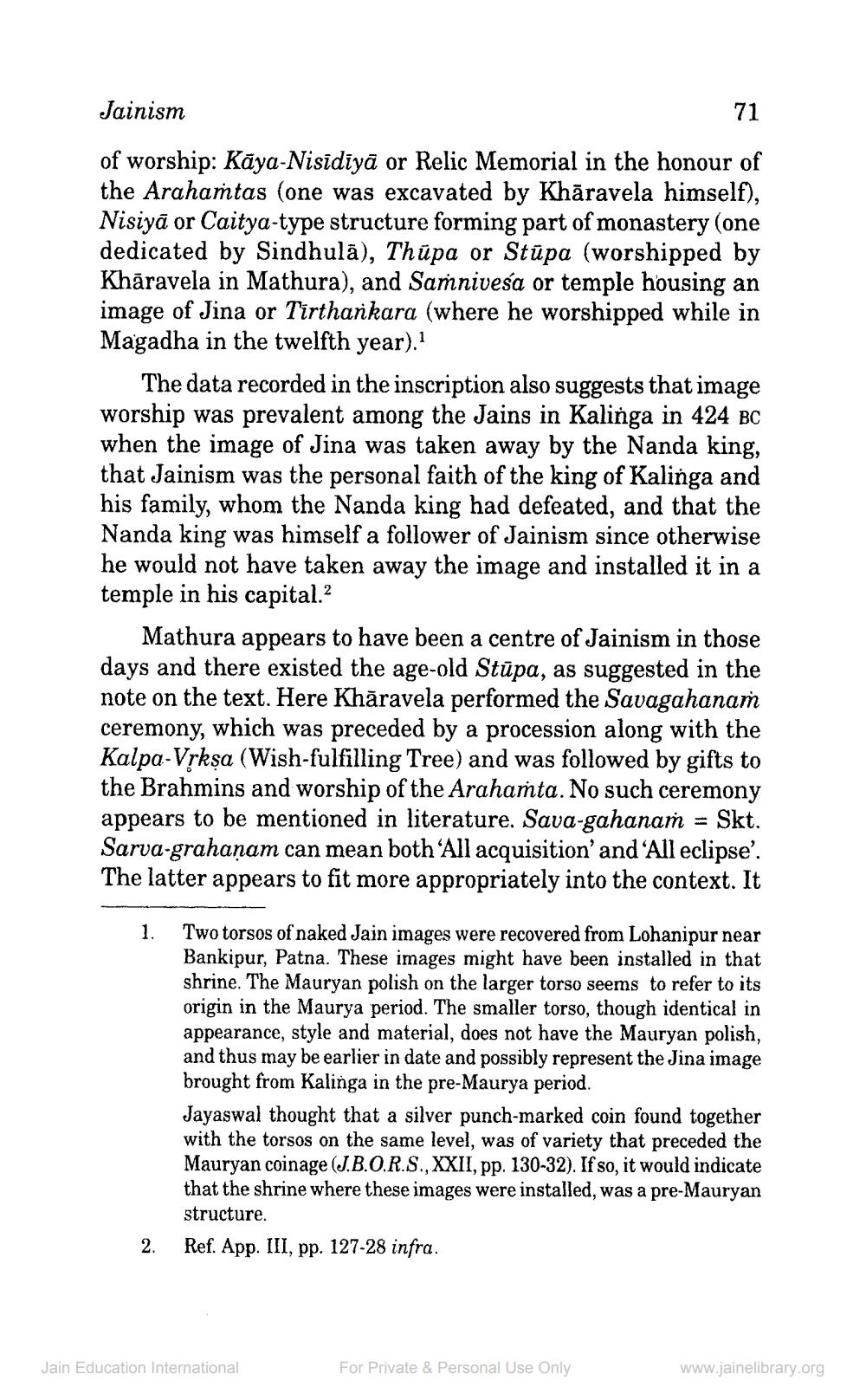________________
Jainism
71
of worship: Kāya-Nisidiyā or Relic Memorial in the honour of the Arahamtas (one was excavated by Khāravela himself), Nisiyā or Caitya-type structure forming part of monastery (one dedicated by Sindhulā), Thüpa or Stūpa (worshipped by Khāravela in Mathura), and Samniveśa or temple housing an image of Jina or Tirtharkara (where he worshipped while in Magadha in the twelfth year).'
The data recorded in the inscription also suggests that image worship was prevalent among the Jains in Kalinga in 424 BC when the image of Jina was taken away by the Nanda king, that Jainism was the personal faith of the king of Kalinga and his family, whom the Nanda king had defeated, and that the Nanda king was himself a follower of Jainism since otherwise he would not have taken away the image and installed it in a temple in his capital.?
Mathura appears to have been a centre of Jainism in those days and there existed the age-old Stūpa, as suggested in the note on the text. Here Khāravela performed the Savagahanań ceremony, which was preceded by a procession along with the Kalpa-Vrksa (Wish-fulfilling Tree) and was followed by gifts to the Brahmins and worship of the Arahasta. No such ceremony appears to be mentioned in literature. Sava-gahanaṁ = Skt. Sarva-grahanam can mean both 'All acquisition' and 'All eclipse'. The latter appears to fit more appropriately into the context. It
1.
Two torsos of naked Jain images were recovered from Lohanipur near Bankipur, Patna. These images might have been installed in that shrine. The Mauryan polish on the larger torso seems to refer to its origin in the Maurya period. The smaller torso, though identical in appearance, style and material, does not have the Mauryan polish, and thus may be earlier in date and possibly represent the Jina image brought from Kalinga in the pre-Maurya period. Jayaswal thought that a silver punch-marked coin found together with the torsos on the same level, was of variety that preceded the Mauryan coinage (J.B.O.R.S., XXII, pp. 130-32). If so, it would indicate that the shrine where these images were installed, was a pre-Mauryan structure. Ref. App. III, pp. 127-28 infra.
2.
Jain Education International
For Private & Personal Use Only
www.jainelibrary.org




